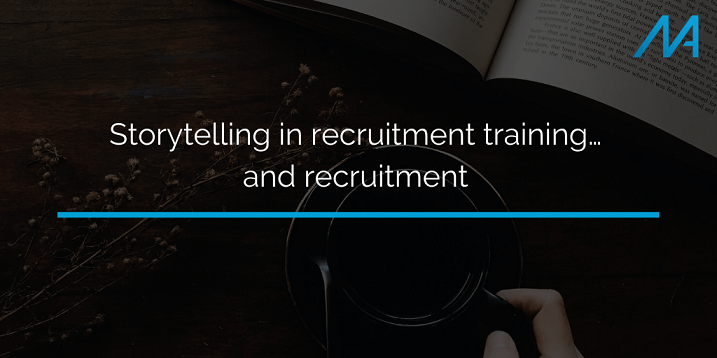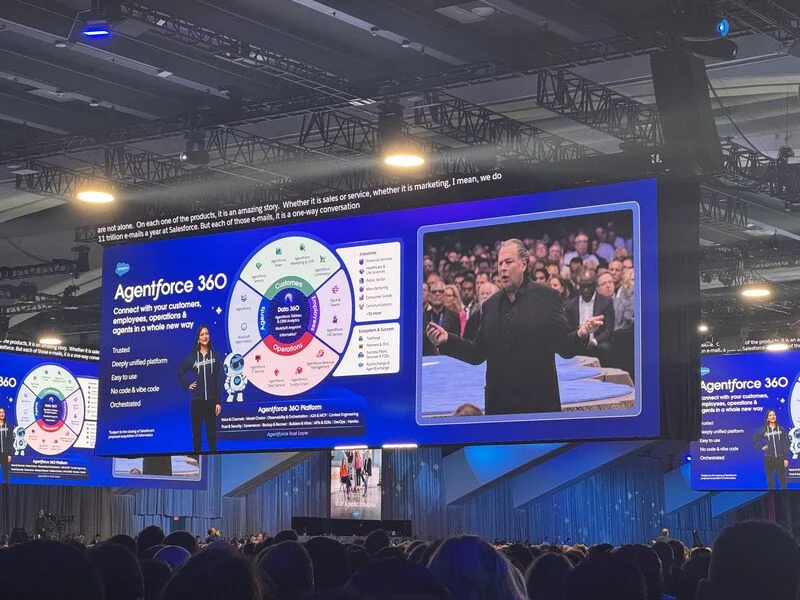Storytelling in recruitment training… and recruitment
05 Feb, 20205 minsIn this interview article our Head of Learning and Development – Isaac Okeowo is sharing his...

In this interview article our Head of Learning and Development – Isaac Okeowo is sharing his most honest advice and insights from years of experience in the Recruitment Training space.
Learn how stories in business drive customer engagement from a sales perspective and what are the methods of creating and communicating a compelling story.
On to Isaac now…
What is the difference between a pitch and a story in business?
When hearing those two words I get a completely different feeling for each. There is just this sense of insincerity when it comes to selling, and on the other hand, this sense of magic when it comes to storytelling.
I am not saying of course that selling is bad! However, all the negative connotations attached to the word are forcing not just a different word selection but also a different approach.
With storytelling, we are taking our customers on a journey. We talk about events that happened in the past, how we helped other people and businesses, or even why we could not, if that’s the case, and the crucial role of communication for such cases to be prevented. We give our clients and customers the option to hear us out, in a relevant and engaging manner, rather than ram it down their throat.
How to transform serious business presentations into compelling stories?
It all comes down to relevancy. If you can pull the important facts and figures into an engaging conversation you have done the job!
However, there is no ‘one size fits all’ way of doing this. One of the things I repeat many times in my trainings is that using scripts is WRONG. If you ask my trainees to quote me, I am sure you will hear them simultaneously say ‘if your manager has given you a script please bring it to me so I can rip it up’.
Recruiters, especially junior ones, might be used to this style of work from other organisations, but here at Montreal Associates we really push authentic connections and true understanding.
All in all, know your side of the story – your offer – and connect that to the customer’s needs in the most engaging way. Win-win.
What is the key to having a meaningful dialogue and deliver value?
Go deep, not wide.
A horizontal approach allows basic understanding of the big picture but prevents deep understanding of the customer or client’s specific needs. Going vertical or deep takes one element of the story and uses it as a driving force, a priority, an asset if you want! Horizontal, would incorporate the ‘tell me everything’ and ‘I’ll give you everything’ scenario and that is just unrealistic.
My advice:
Pick one or two key elements from a conversation and go real deep with the level of understanding and commitment.
By going deep, you develop an understanding of clients, candidates and their specific needs and businesses, and that’s what really influences the level of service you can offer.
How about face to face communication, do you have any specific advice?
Absolutely! There are three critical tips I would give to anybody willing to have a meaningful conversation:
- Eye contact
- Nodding
- Paraphrasing
Eye contact is very important but often underestimated. I do understand that sometimes picking up all the information and taking notes might be a ‘good excuse’ not look at somebody, but again – deep, not wide. This element of human communication always sends the same signal – I am interested and engaged in what you are saying. Lift your head up!
Nodding might sound odd but it is powerful! ‘I understand’ is a long phrase but you could make it clear without no words.
Paraphrasing is a skill and a tool that has proven to boost conversational engagement in an interview format. ‘I hear you and I understand’ – how many times could you possibly say it? No need.
How does storytelling impact your training sessions?
In some industries, an L&D professional does not need to have done the job of the trainee to be able to educate. I can teach bankers about the concepts of learning and we would be all fine with it.
Recruitment is a completely different story though. If you don’t have credibility you have instantly lost the room. If your trainees are not bought into you, they will refuse to learn from you – their learning capacity literally shrinks due to the lack of trust.
Storytelling is massively important to increase the buy-in from the group in my trainings.
In my training activities, storytelling is 40% of delivery. It is mainly that mentoring piece where we are going through my experiences – good and bad. With the bad ones, I am able to say: ‘This is what went wrong, and this is what I’ve learned from it. Learn from my mistakes instead of making your own.’ And the opposite, ‘This is what I did well, and I want you to use for your own benefit.’
Storytelling brings theory to life. If I say ‘this is the formula of recruitment’, that’s good or at least agreed with (by nodding). When I say ‘This is how I used it two years ago and this is what the outcome was’ then I get a conversation started and I know I triggered thought processes.
Do stories actually impact information retention?
The majority of people won’t remember the theory, but they remember the story.
In one of my sessions, I was explaining the difference between finding a candidate and attracting a candidate. My definition: when you go to find a candidate, you’re doing the typical activities that anybody would do when looking, like browsing job boards and relevant sites. Attracting on the other hand is all about being seen, like sharing relevant content and developing your personal brand on social media.
Explained that way, 30% of the room remembered the next day.
But when I gave them a STORY that number drastically changed.
My story was about two friends and our night life together, no joke. So when we go into a club friend X is the shark. He’s looking around for the girls. He’s hunting, actively approaching. On the other side, friend Y prefers to stand on the table, presentable with a bottle of champagne so everybody can see him. He tries to attract, to get the girls come to him.
The following day everybody remembered what’s the difference between finding candidates and attracting candidates.
The storytelling helps retention because it brings the material to life. It takes it away from recruitment and makes it real and relatable.



